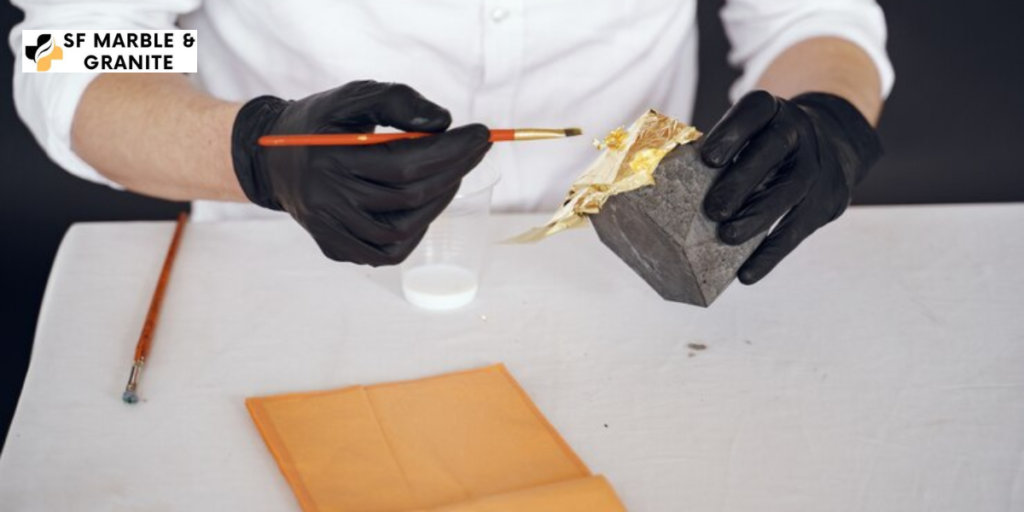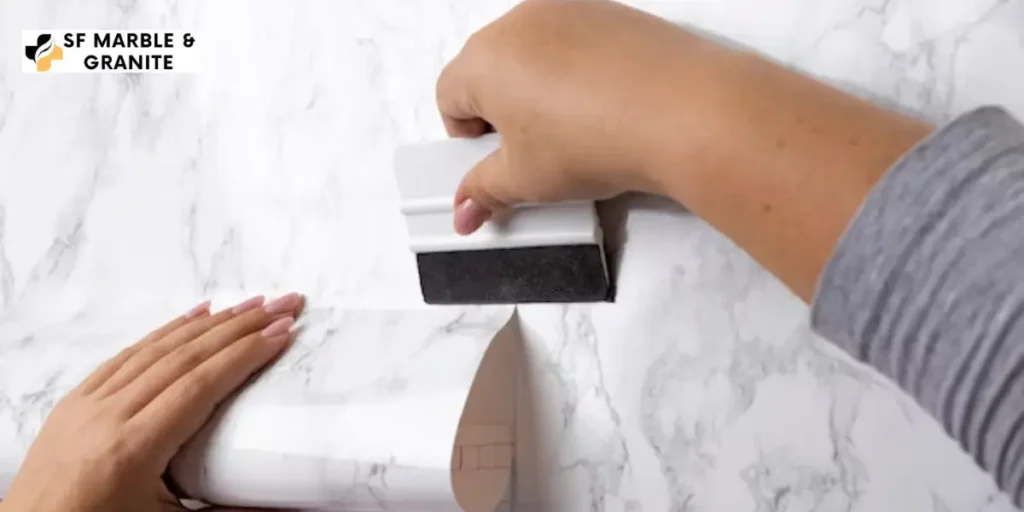Are you looking to preserve the beauty of your marble surfaces for years to come? In this comprehensive guide, we’ll walk you through the essential steps of how to seal marble effectively. From understanding the importance of sealing to selecting the right sealant and mastering the sealing process, you’ll gain valuable insights to keep your marble looking pristine.
At SF Marble And Granite Inc, we understand the significance of maintaining your marble surfaces. With our expertise and top-notch sealants, we’re committed to helping you achieve lasting protection and shine for your marble countertops, floors, backsplashes, and more. Trust us to deliver superior results and preserve the elegance of your marble investments.
Understanding the Importance of Sealing Marble
How to Seal marble is essential step to safeguard its natural beauty and durability. Marble is a porous material prone to staining and etching from spills, moisture, and everyday use. By sealing marble, you create a protective barrier that prevents liquids and contaminants from penetrating the surface, reducing the risk of permanent damage.
Without proper sealing, marble is susceptible to discoloration, etching, and dullness over time. Sealing not only enhances the appearance of marble but also prolongs its lifespan, ensuring that your surfaces remain vibrant and elegant for years to come. Whether it’s countertops, floors, or backsplashes, sealing marble is a crucial step in preserving its timeless allure.
How to Seal Marble Surface
Before sealing your marble surface, it’s essential to ensure it’s clean and free of any dirt, grime, or residue. Start by thoroughly cleaning the surface with a gentle marble cleaner or a solution of mild dish soap and water. Use a soft cloth or sponge to wipe away any debris, paying special attention to areas with stubborn stains or buildup.
Once the surface is clean, allow it to dry completely before proceeding with the sealing process. This ensures that the sealant can adhere properly to the marble without any moisture trapped underneath. Take care to ventilate the area during drying to speed up the process and prevent any lingering moisture.
Inspect the marble surface for any existing damage, such as scratches or chips, and address them accordingly before sealing. Repairing any imperfections ensures a smooth and even application of the sealant, resulting in a flawless finish.
By properly preparing your marble surface for sealing, you set the foundation for long-lasting protection and beauty. Follow these steps diligently to maximize the effectiveness of the sealing process and enjoy the stunning results for years to come.
Selecting the Right Sealant for Your Marble
Choosing the correct sealant is crucial to ensure optimal protection and longevity for your marble surfaces. When selecting a sealant, consider factors such as the type of marble, its location, and the level of protection required.
For interior marble surfaces such as countertops and floors, opt for a penetrating sealant. Penetrating sealants penetrate the pores of the marble, creating a protective barrier without altering its natural appearance. Look for sealants specifically designed for use on marble to ensure compatibility and effectiveness.
For exterior marble surfaces or areas prone to heavy moisture exposure, such as showers or outdoor patios, consider a topical sealant. Topical sealants form a protective layer on the surface of the marble, providing enhanced resistance against water, stains, and UV damage. Be sure to choose a sealant formulated for outdoor use and suitable for marble surfaces.
Additionally, consider the durability and longevity of the sealant. Look for products with long-lasting protection and easy maintenance to minimize the need for frequent reapplication. Read product reviews and consult with experts to find the best sealant for your specific marble needs.
By selecting the right sealant for your marble, you can ensure maximum protection and maintain the natural beauty of your surfaces for years to come. Take the time to research and choose wisely to achieve the best results for your marble investments.
Step-by-Step Guide: How to Seal Marble

How to seal marble is a straightforward process that can be easily accomplished with the right tools and techniques. Follow these simple steps to seal your marble surfaces effectively:
Clean the Surface
Begin by thoroughly cleaning the marble surface with a mild cleaner or a solution of dish soap and water. Use a soft cloth or sponge to remove any dirt, grime, or residue. Pay special attention to areas with stains or buildup, ensuring the surface is clean and dry before proceeding.
Test the Sealant
Before applying the sealant to the entire surface, it’s essential to test it in a small, inconspicuous area of the marble. This allows you to ensure compatibility and assess the results before proceeding with the sealing process.
Apply the Sealant
Once you’ve selected a suitable sealant and conducted a test patch, it’s time to apply the sealant to the marble surface. Use a clean, dry cloth or applicator pad to evenly distribute the sealant in small, overlapping strokes. Work in sections to ensure thorough coverage and avoid missing any areas.
Allow for Drying Time
After applying the sealant, allow it to dry completely. This typically involves letting the sealant sit undisturbed for a specified period to allow it to penetrate the marble and create a protective barrier.
Buff and Polish
Once the sealant has dried, use a clean, dry cloth to buff the surface gently. This helps to remove any excess sealant and achieve a smooth, glossy finish. For added shine, consider using a marble polish or buffing compound to enhance the appearance of the sealed surface.
By following these step-by-step instructions, you can effectively seal your marble surfaces to protect them from stains, moisture, and other damage while enhancing their natural beauty. With proper care and maintenance, your sealed marble will remain elegant and pristine for years to come.
Conclusion
In conclusion, how to seal marble is an essential step in preserving its beauty and longevity. By understanding the importance of sealing, properly preparing the surface, selecting the right sealant, and following a step-by-step sealing process, you can protect your marble surfaces from stains, etching, and other damage while maintaining their elegant appearance for years to come.
At SF Marble And Granite Inc, we’re dedicated to providing top-notch sealing solutions for all your marble needs. With our expertise and high-quality sealants, we ensure that your marble surfaces receive the protection they deserve. Contact us today to learn more about our services and how we can help you preserve the beauty of your marble investments.
For inquiries, you can reach us via email at sfmarbleandgranite@gmail.com or visit us at our address: 755 Dutton St. Lowell, MA 01851. You can also give us a call at 978-459-5825. Trust SF Marble And Granite Inc for all your marble sealing needs.
FAQs
How often should I seal my marble surfaces?
It’s recommended to seal marble surfaces annually to maintain optimal protection. However, high-traffic areas may require more frequent sealing.
Can I use any sealant on marble?
No, it’s essential to use a sealant specifically formulated for marble to ensure compatibility and effectiveness.
How long does it take for the sealant to dry?
Drying times vary depending on the type of sealant used and environmental conditions. Generally, allow 24-48 hours for the sealant to cure fully.
Will sealing marble change its appearance?
Penetrating sealants typically do not alter the appearance of marble, while topical sealants may add a slight sheen. Always test the sealant in a small area first to assess the results.
How to seal marble myself as professional?
Sealing marble can be done as a DIY project, but hiring a professional ensures optimal results, especially for intricate or large-scale surfaces.

